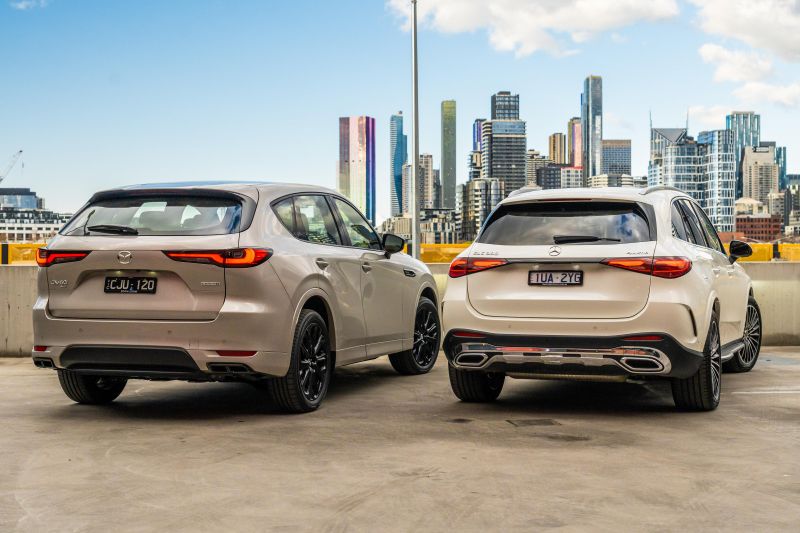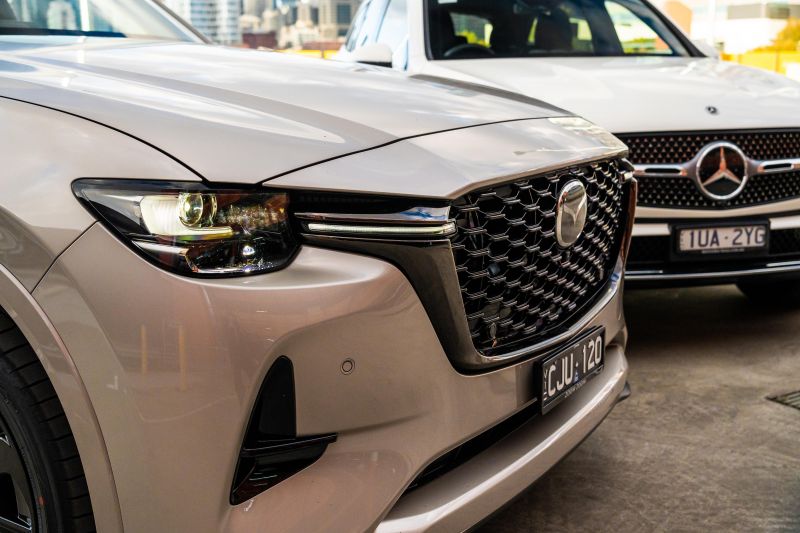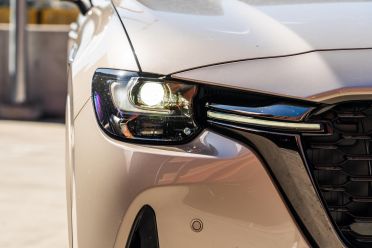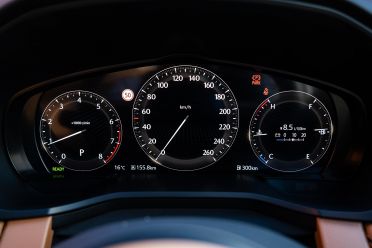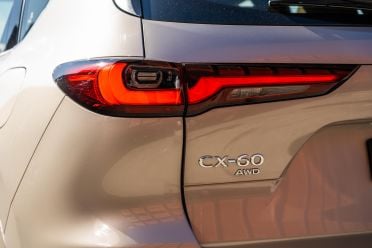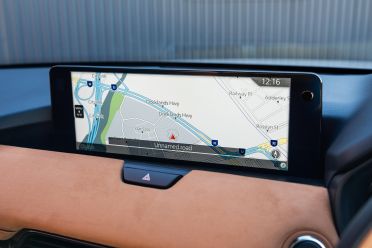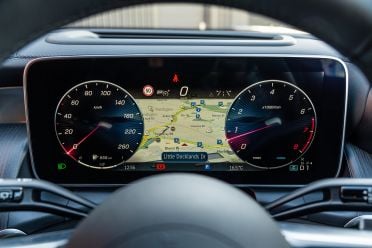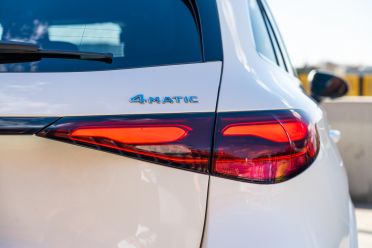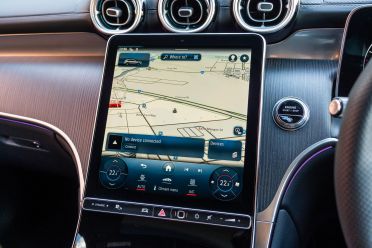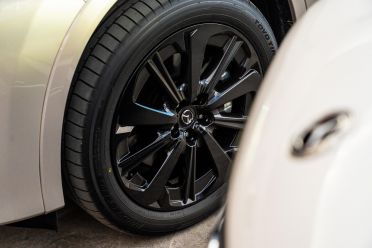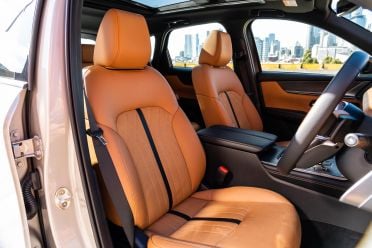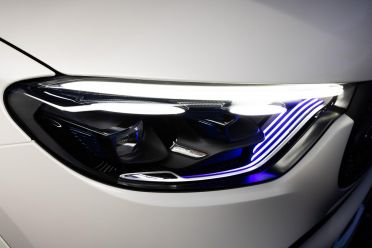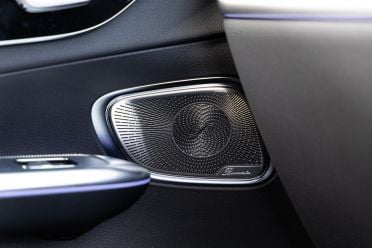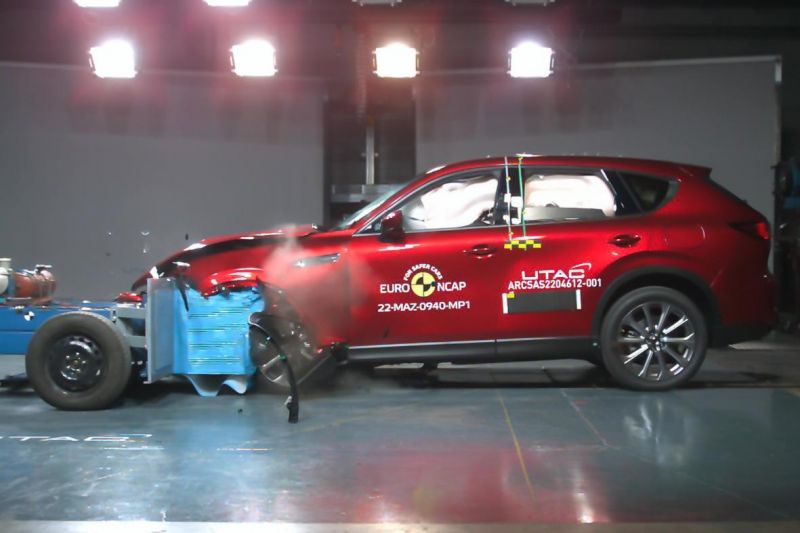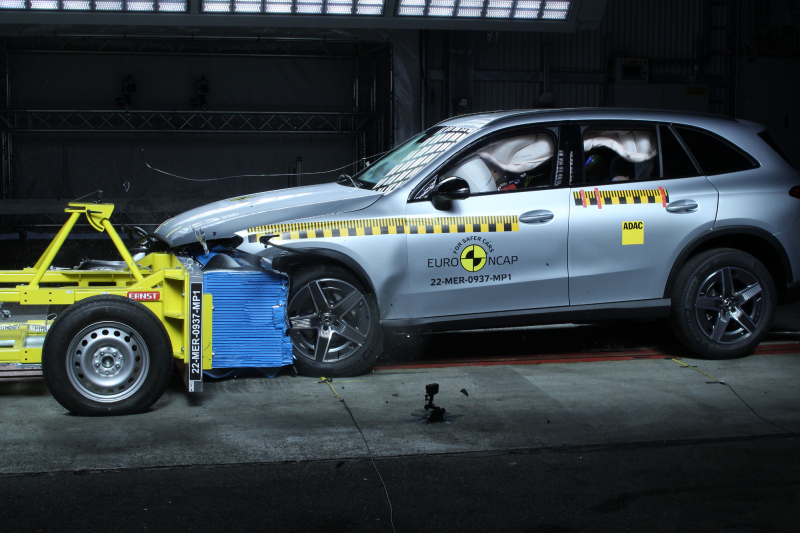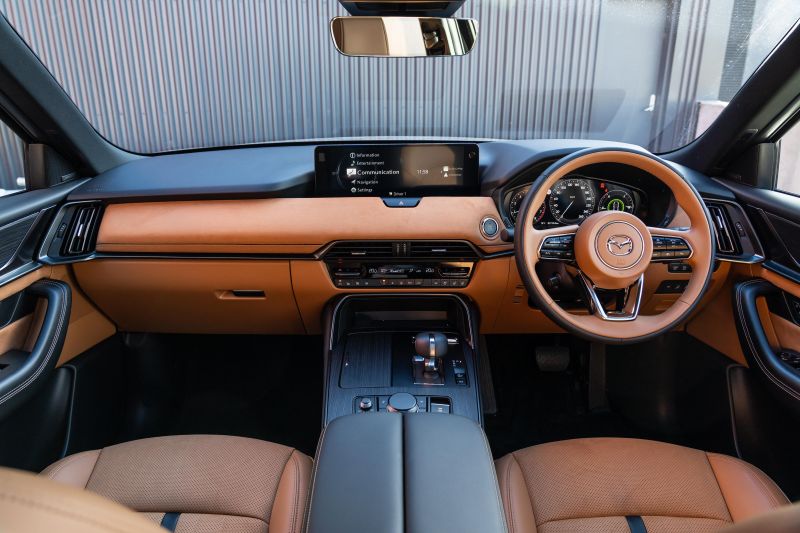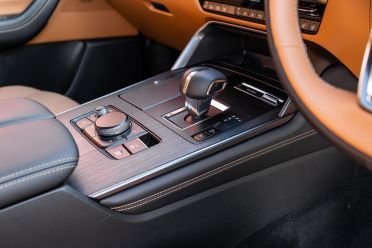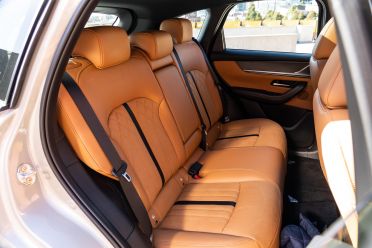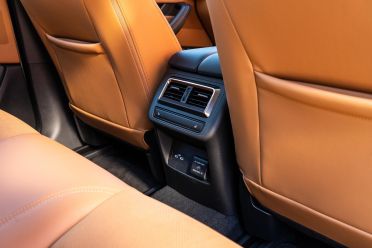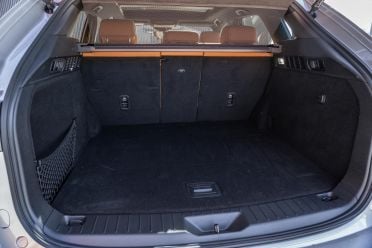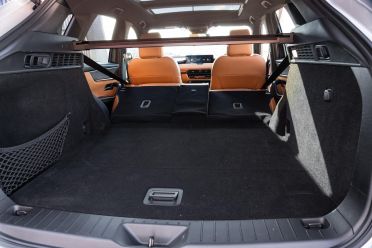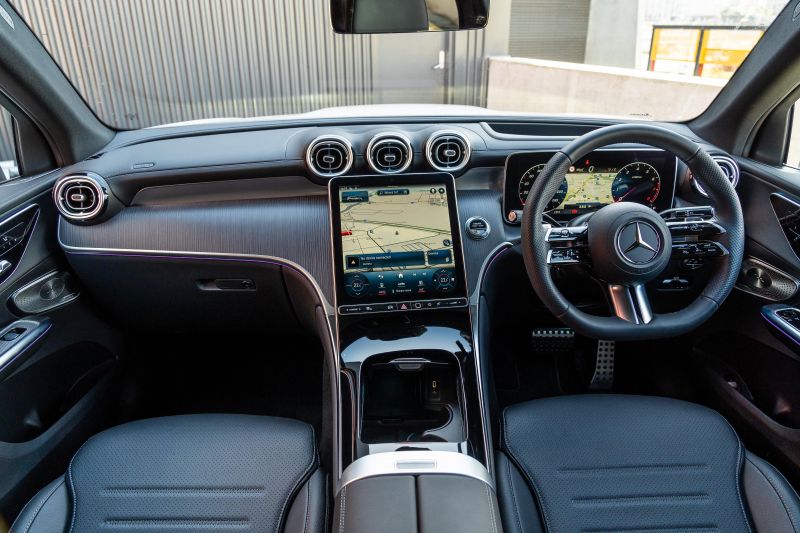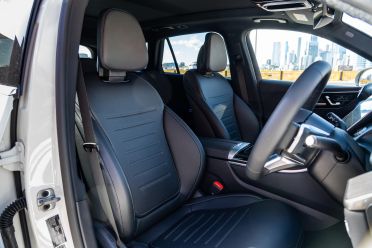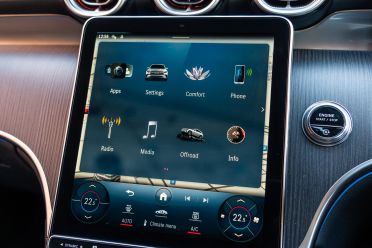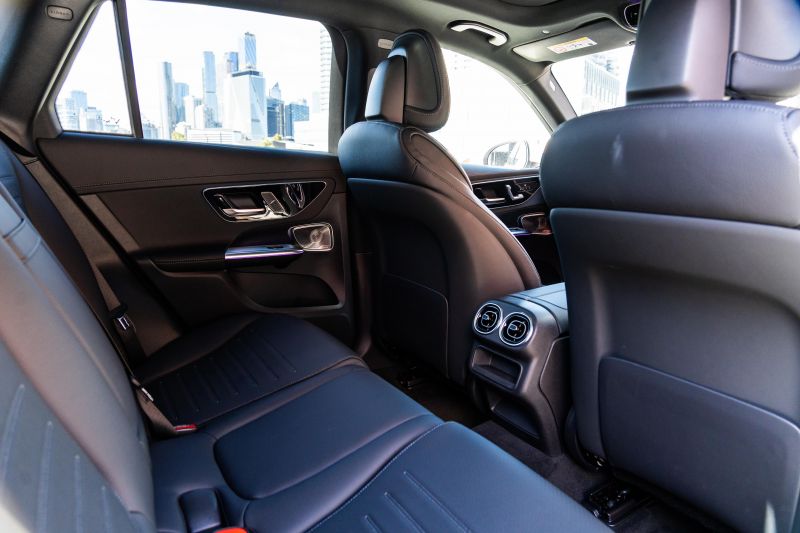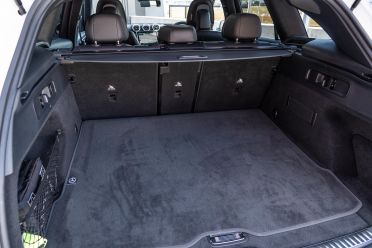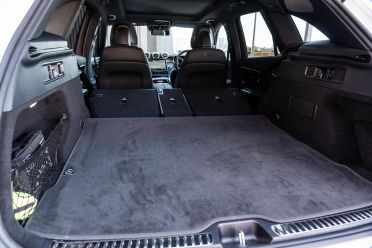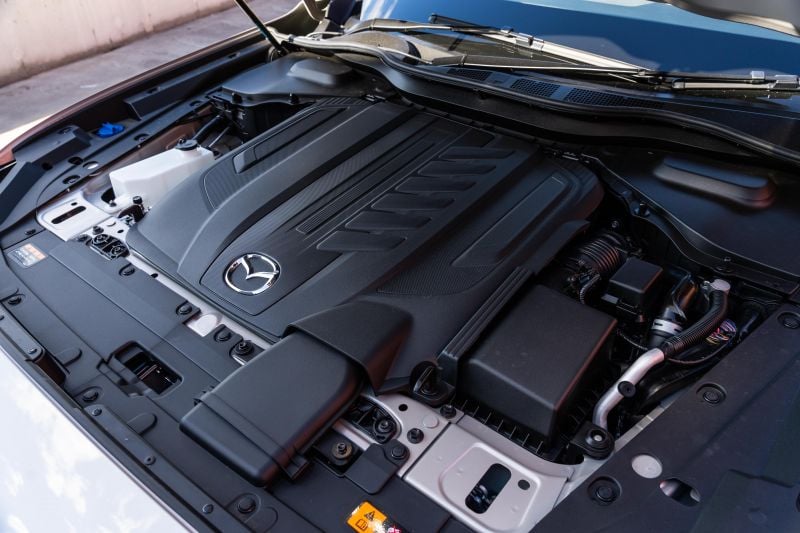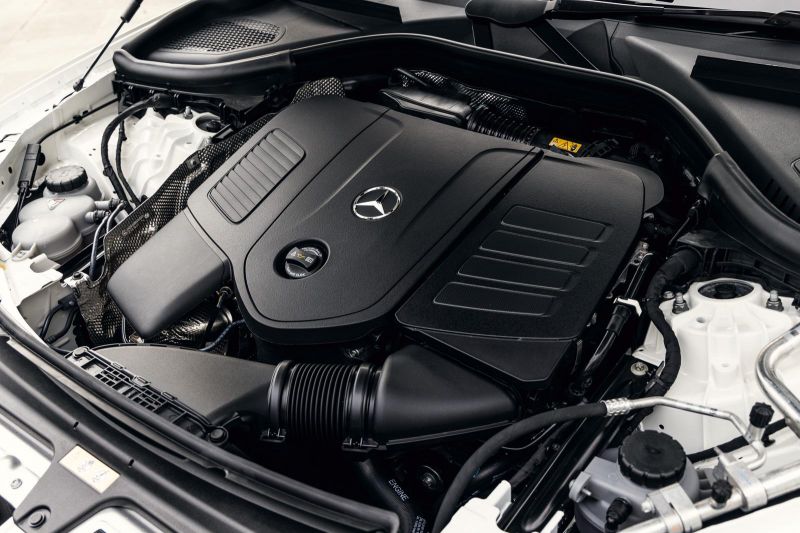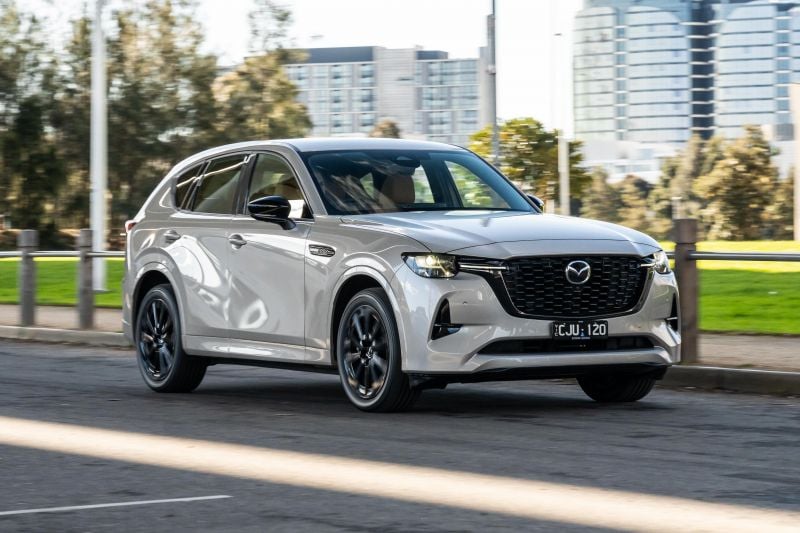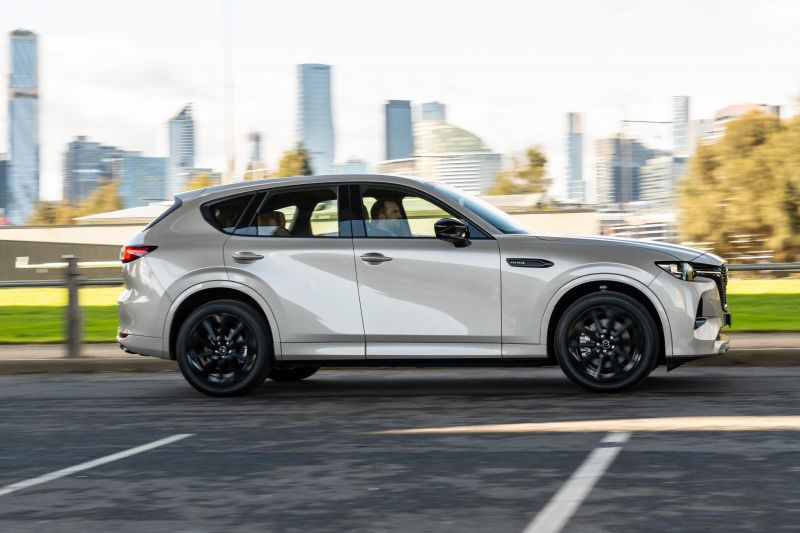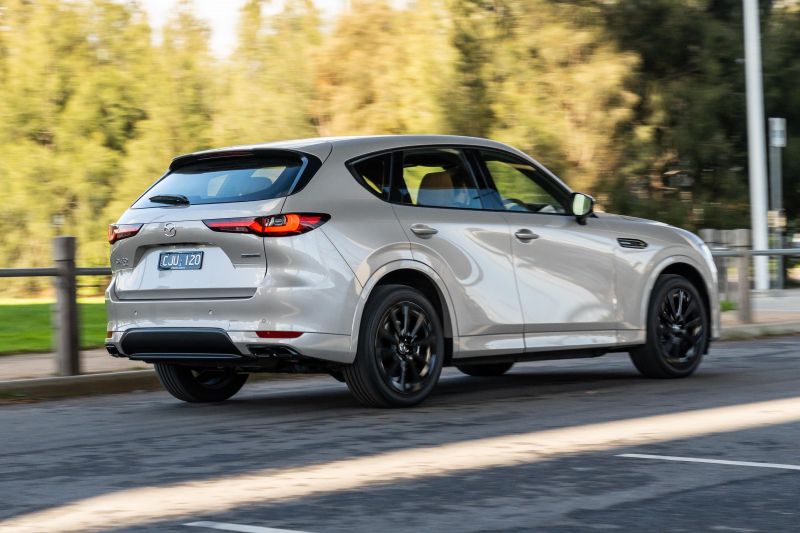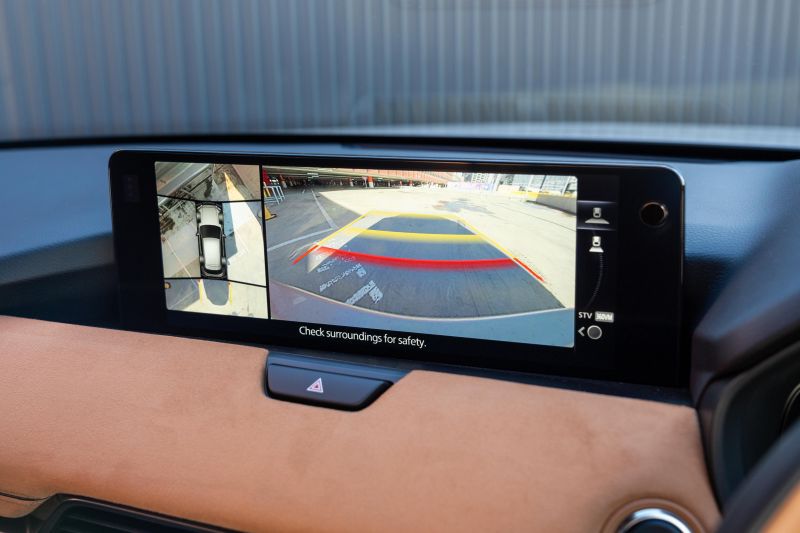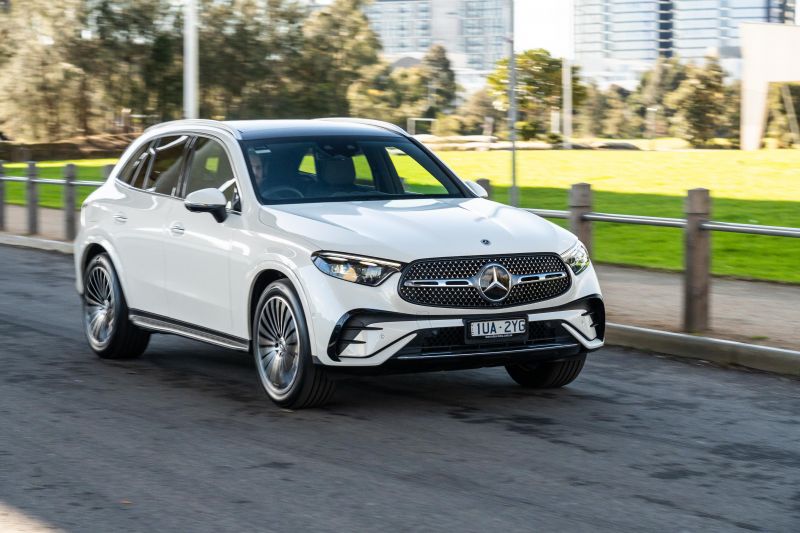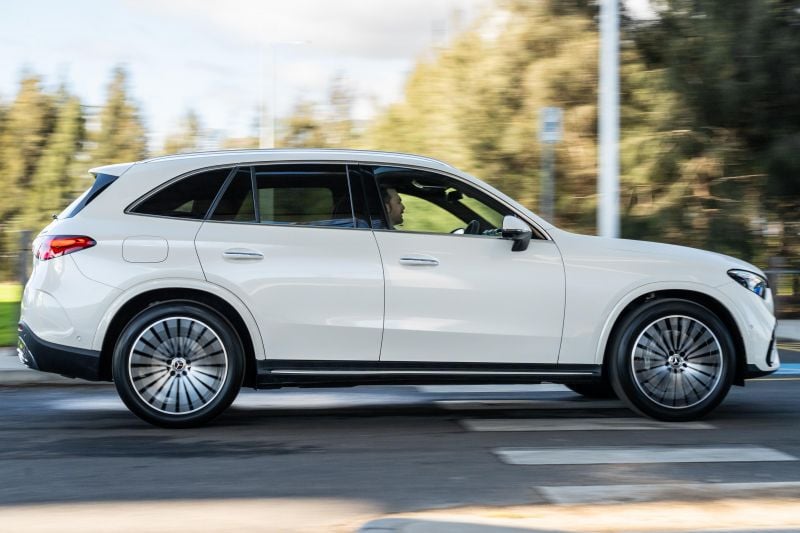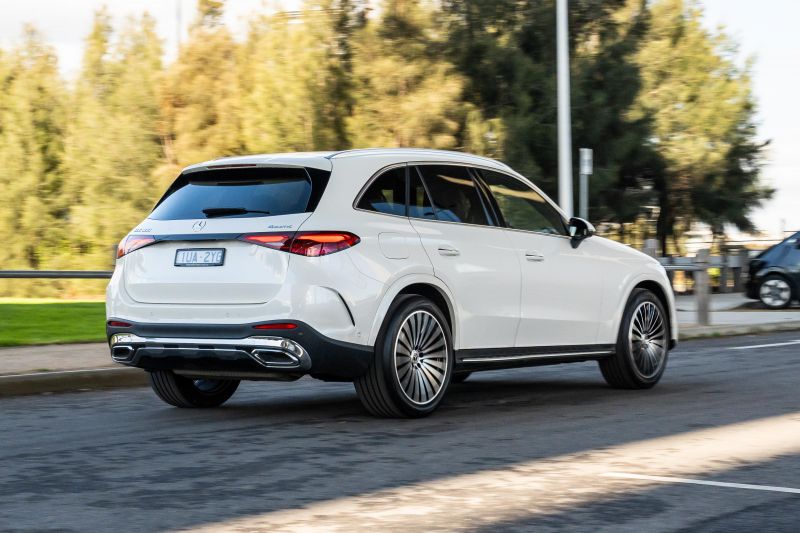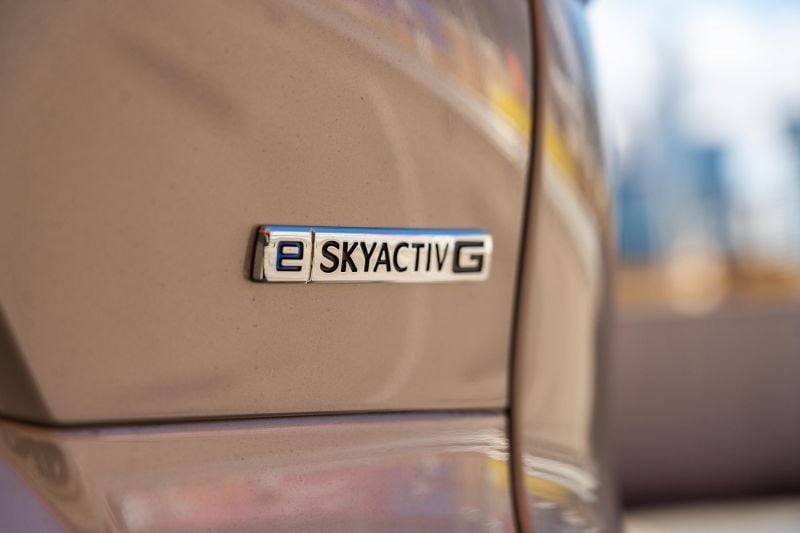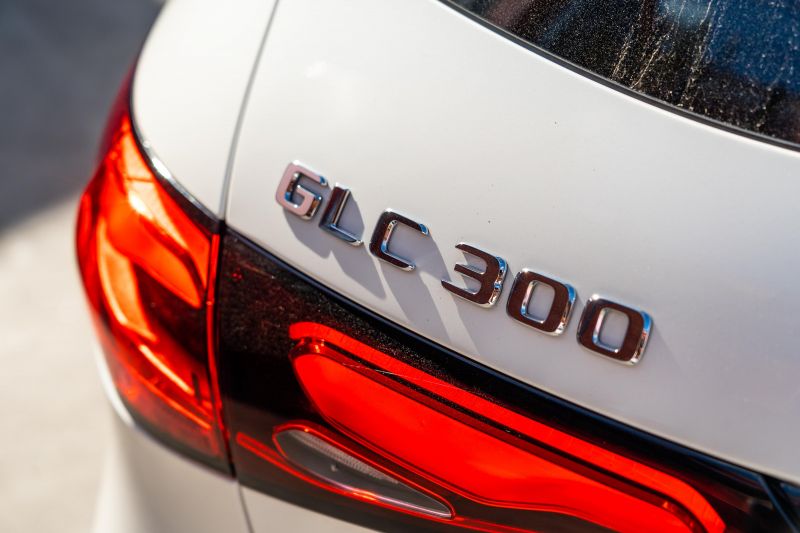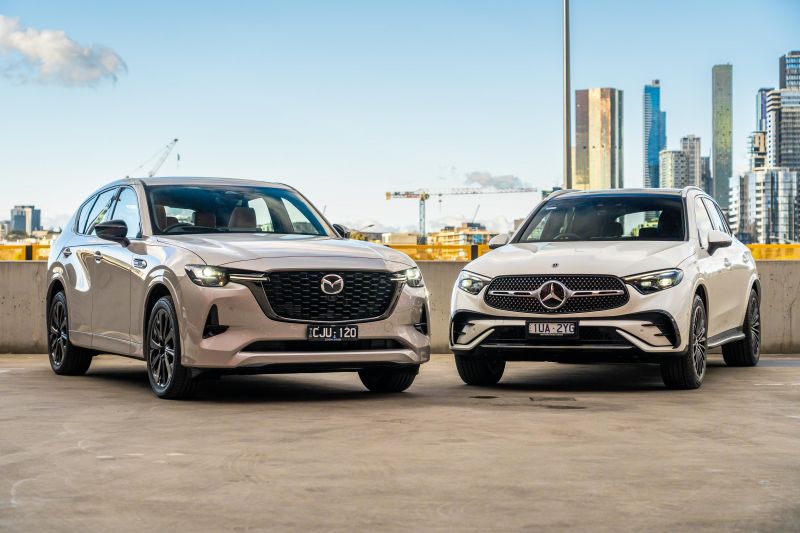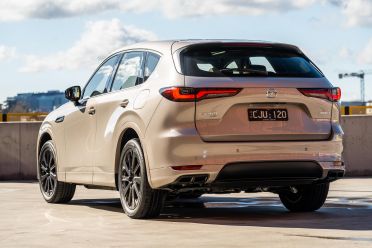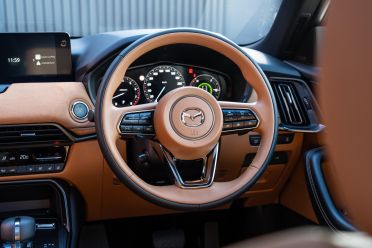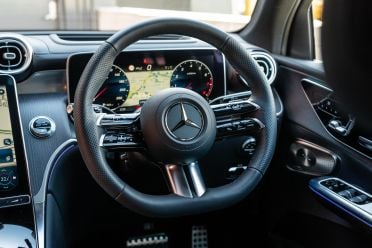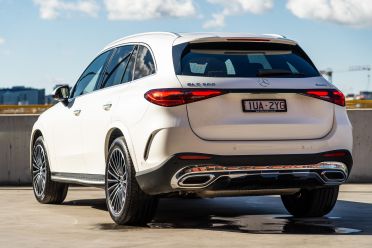Mazda is making bold claims about its new Large Architecture SUVs, starting with the CX-60.
The Japanese brand says its new larger models with their inline six engines and rear-wheel drive architectures are its answer to the Euro premium establishment – namely Audi, BMW, Lexus and Mercedes-Benz.
So, why not test out that claim? Here on test we have the 2024 Mazda CX-60 G40e Azami up against the 2024 Mercedes-Benz GLC 300 4Matic to see if Mazda can really duke it out with the establishment.
From the get-go the Mazda has a near-$30,000 price advantage over the Benz, a gap which grows wider if you add the available Plus Package for the German. Is it that much better a car to justify the extra spend?
Well, let’s find out!
How much?
There’s a fairly wide price gap at play here.
You can get into a CX-60 from around $60,000 before on-road costs, but the top-spec Azami trim with the G40e mild-hybrid petrol engine asks for $73,600 plus on-roads.
Our test car also had the $2000 SP Package fitted, which brings the sportier blacked-out exterior accents and wheels, as well as a pretty fetching Tan leather and suede interior.
So, $75,600 before on-road costs as tested for a completely decked-out CX-60. You can add another $2000 and get the torquier D50e mild-hybrid inline six diesel, or $12,800 for the plug-in hybrid – quite a bit of choice.
The Mercedes-Benz GLC 300 4Matic meanwhile, is the sole engine variant available for German marque’s mid-sizer in Australia. It’s priced from $103,700 before on-road costs.
It’s also worth mentioning the old model’s six-cylinder and plug-in hybrid engine options are no more, despite overseas markets still getting several versions of the latter.
In order to be more competitive with the overall specification of the Mazda, the GLC requires the Plus Package which wants for an extra $6900 – though our test car wasn’t specified with this.
So that’s a price difference of at least $30,000 before you even factor in on-road costs – you could buy a second car with that change!
What do you get?
CX-60 Evolve highlights:
- 18-inch alloy wheels, Grey
- Auto LED headlights
- Auto high-beam
- Rain-sensing wipers
- Body colour exterior mirrors
- Side mirrors with:
- Power adjustment
- Auto folding
- Heating
- Auto-dimming
- Honeycomb grille design
- Black wheel arches and lower cladding
- Remote operated power tailgate (open/close)
- G-Vectoring Control Plus
- 10.25-inch Mazda Connect infotainment system
- 7.0-inch TFT LCD instrument cluster (G40e, D50e)
- 12.3-inch TFT LCD instrument cluster (P50e)
- Head-up display
- DAB+ digital radio
- Satellite navigation
- 8-speaker sound system
- Wireless Apple CarPlay, Android Auto
- Wireless phone charger
- Front USB-C charging points
- Rear console incl. USB-C, 150W AC outlets
- Rear 1500W AC power outlet socket (PHEV)
- Keyless entry, push-button start
- Dual-zone climate control
- Auto-dimming rear-view mirror
- Electric park brake with auto-hold
- One-touch power windows
- Leather steering wheel
- Leather shift knob
- Black Maztex upholstery
- Manual front seat adjustment
CX-60 GT adds:
- 20-inch alloy wheels, Black metallic
- LED headlights with ‘dark signature’
- Rear combination lights incl. signature illumination
- Power sliding panoramic sunroof
- Gloss black exterior mirrors
- 2-position memory, side mirrors
- Body colour wheel arches, lower cladding
- Gloss black honeycomb grille
- Exterior mirror position memory
- Hands-free power tailgate (open/close)
- 12.3-inch TFT LCD digital instrument cluster
- 12.3-inch infotainment system
- 12-speaker Bose premium sound system incl. amplifier
- Driver monitor system
- Personalise system
- Electric steering wheel adjustment
- Heated steering wheel
- Black leather upholstery
- 10-way power driver seat
- incl. lumbar adjustment
- incl. 2-position driver memory
- 8-way power passenger seat
- Heated front seats
- Heated outer rear seats
- Surround-view cameras
CX-60 Azami adds:
- 20-inch machined alloy wheels
- Adaptive LED headlights with ‘bright signature’
- Body colour exterior mirrors
- Front bumper with bar-type grille
- Cruising & Traffic Support
- Front cross-traffic alert
- Surround-view cameras incl. see-through view
- Personalise system with ‘Easy Entry & Driving’
- LED ambient lighting
- Frameless interior mirror
- Black Nappa leather upholstery
- Ventilated front seats
- Leather side door trim with courtesy lamp
GLC 300 4Matic highlights:
- 20-inch alloy wheels
- AMG Line exterior
- Panoramic glass sunroof
- Aluminium-look running boards
- Coloured wheel arch liners
- Power tailgate
- 11.9-inch MBUX touchscreen infotainment system
- Wireless Apple CarPlay, Android Auto
- Satellite navigation
- Fingerprint scanner
- Head-up display
- Wireless charger
- Off-Road driving mode incl. transparent bonnet view
- AMG Line interior
- Woodgrain dashboard trim
- Piano black centre console
- Artico upper dash
- Artico door linings
- Artico upholstery
- Powered front seats incl. memory
- Heated front seats
Options
Mazda CX-60
SP Package: $2000 (Azami)
- 20-inch alloy wheels, Black metallic
- Dark-coloured side signature
- Gloss black honeycomb-type grille
- Gloss black exterior mirrors
- LED headlights with dark signature
- Suede dashboard panel
- Tan Nappa leather upholstery
- Two-tone steering wheel
Takumi Package: $2000 (Azami)
- Bright decoration panel
- Cloth dashboard panel with ‘Kakenui’ stitching
- White Maple Wood console panel
- White Nappa leather upholstery
Mercedes-Benz GLC
Plus Package: $6900
- Burmester 15-speaker premium audio
- Keyless-Go Package Plus
- Hands-free tailgate
- Digital Light incl. adaptive high-beam
- Parking Package
- Heat, noise insulating acoustic glass
- MBUX augmented reality navigation
Two-tone leather: $3300
- Power Red, Black upholstery
Manufaktur premium paint: $1500
20-inch AMG multi-spoke light-alloy wheels: $1000
Are they safe?
Mazda CX-60
The CX-60 wears a five-star ANCAP safety rating based on Euro NCAP testing in 2022.
It scored 91 per cent for adult occupant protection, 93 per cent for child occupant protection, 89 per cent for vulnerable road user protection and 77 per cent for safety assist.
Standard safety features include:
- 10 airbags incl. front-centre airbag
- Adaptive cruise control
- Autonomous emergency braking (AEB)
- Forward incl. Pedestrian, Cyclist detection
- Reverse
- Junction assist (Turn-across Traffic)
- Blind-spot monitoring
- Driver attention monitoring
- Forward obstruction warning
- High Beam Control (auto high-beam)
- Lane-keep assist
- Parking sensors front, rear
- Rear cross-traffic alert
- Surround camera system
- Traffic sign recognition
- Tyre pressure monitoring
- Vehicle exit warning
CX-60 Azami adds:
- Adaptive LED Headlights
- Cruising & Traffic Support
- Adaptive cruise + lane centring
- Front cross-traffic alert
- 360-degree cameras incl. See Through View
Mercedes-Benz GLC
The Mercedes-Benz GLC SUV earned a five-star ANCAP safety rating earlier this year against the 2020-2022 testing protocols.
Standard safety equipment includes:
- Adaptive cruise control
- Autonomous emergency braking (AEB)
- Blind-spot assist
- Lane keep assist
- Parking sensors front, rear
- Rear cross-traffic asssit
- Semi-autonomous parking assist
- Speed sign recognition
- 360-degree cameras
- Tyre pressure monitoring
What are they like inside?
Mazda CX-60
With a two-tone steering wheel reminiscent of a Range Rover or Bentley, as well as quilting on the seats, there’s a very high-end look about it for something that comes in at the mid-$75,000 mark. Perhaps only Genesis offers this kind of ambience for similar money.
The front seats are pretty comfortable and offer 10-way adjustment for the driver (including lumbar and memory) as well as eight-way adjustment for the passenger. They’re also heated and ventilated in the Azami, which is a nice touch.
Ahead of the driver are a pair of 12.3-inch displays; the instrument cluster and central infotainment system, which only offers touch functionality when you’re stationary. Otherwise, you use the BMW iDrive-style rotary controller on the centre console.
The instrument binnacle has a standard view mimicking conventional dials, as well as a driver assist view which is automatically activated each time you turn on the cruise. It’s a shame there’s no further customisation beyond a small widget with a couple of readouts in the right-hand dial.
The Mazda Connect infotainment interface is basically the same as in other Mazda models on a larger display, and there’s no extended online functions like there are in other markets… yet.
There’s satellite navigation, AM/FM/DAB radio, wireless Apple CarPlay and Android Auto, as well as Bluetooth phone and audio streaming. It covers those bases pretty well, and I spent most of my time using smartphone mirroring which worked flawlessly – after an annoying bug that meant it took a couple of attempts to pair first time.
Azami grades come fitted with a 12-speaker Bose audio system which offers good audio, and can be adjusted to offer a surround sound experience and thumping bass. It’s not quite on the level of the Benz’s Burmester system, though.
Mazda has stuck to physical switchgear for the climate controls, which is great. There’s a nice solid feel and action to them, helping to uphold that perception of quality. Speaking of quality, the fit and finish is pretty darn good. Everything feels solidly screwed together, and there’s a decent ratio of soft-touch materials to hard surfaces.
I will say, the lack of softer surfaces below the dashboard, as well as textured soft plastic instead of stitched leather-like door tops (which you get in the CX-5) is disappointing.
There’s a pair of cupholders beside the gear selector, ahead of which are a wireless phone charger and USB-C inputs. Storage elsewhere up front includes decent door bins and a deep cubby underneath the dual-lid centre armrest – so you can open half of it without disturbing your passenger.
The second row isn’t massive, and definitely loses ground to the Mercedes. Behind my driving position (I’m 6’1) I had enough head-, knee- and toe room to get comfortable, with a good view out the rear windows. I’d wager two adults will be fine, three would be a pinch. The minimal centre tunnel at least means a centre passenger isn’t too impeded in terms of foot space.
Amenities include rear air vents – though no separate climate controls – as well as USB-C and 150W AC outlets to keep devices charged as well as heated outboard seats.
There’s a fold-down centre armrest with cupholders, map pockets behind the front seats, as well as ISOFIX anchors on the outer positions and top-tethers across all three rear seats. Bottle holders in the doors round out the notable practicality features.
Cargo volume is quoted at 477 litres “to rear package tray” with all seats up, expanding to 1726 litres “to ceiling with underfloor storage space” with the rear seats folded. Not bad, but somewhat off the pace of the GLC (620L) with all seats in use.
Remote levers to drop the rear seats feature in the cargo area. Mild-hybrid versions get a space-saver spare wheel.
Mercedes-Benz GLC
Mercedes-Benz has a knack for cabins that smack you in the face with wow factor on first glance and big displays – especially if you opt for the swish Neva Grey leatherette or two-tone Sienna Brown option over our tester’s black exterior.
That 11.9-inch MBUX touchscreen rises out of the centre console like a spaceship control panel, and the freestanding 12-inch digital instrument cluster likewise is futuristic in its execution. Both feature surface coatings to minimise glare, and achieve that in most conditions.
It’s all running the second generation MBUX interface, which offers high resolution, snappy load times, and a wealth of configurability for both displays. Another major upgrade over the previous iteration is the fact Apple CarPlay and Android Auto are wireless.
Connected services are included out of the box, including online traffic updates and net-based services accessed via the touchscreen. Most will just use Apple CarPlay and Android Auto, which was reliable and snappy during our time with the GLC… save for a couple of dropouts at known points around Melbourne.
Fit and finish was once a Mercedes-Benz hallmark, though these days the German marque can be a little patchy in areas – particularly in anything badged below ‘E’.
The man-made leather trim is supple enough, and features on the seats, door tops and dash, with stitched details that look quite fetching and upmarket. That’s contrasted with a lot of gloss black trim on the centre console, prone to fingerprints and scuffs.
Other marks against the brand’s otherwise solid reputation for quality are some of the interior plastics. The dashboard trims often sound like they flex over driveways and ramps, and the sliding lid on the centre bin in our test car sometimes let out a yucky squeak when we opened it.
For a luxury car costing over $100,000 wearing the Three-Pointed Star on its nose, these sort of things aren’t really acceptable.
The GLC SUV offers rear accommodation that is pretty much class leading in the premium mid-size SUV segment, and is the better of the two vehicles here.
It’s a shame there’s no option for a third zone of temperature controls, given you can get that sort of stuff in a Volkswagen Golf these days – the CX-60 also misses out.
Amenities include rear air vents, a fold-down armrest with cupholders, ISOFIX child seat anchor points and top-tether mounts across the rear seatbacks, and the centre seatback folds individually if you need to stow a longer item.
The GLC SUV offers a big 620L with the rear seats in place, expanding to 1680L with the rear seats folded – more than the Mazda in both measurements. Under the boot floor is a space-saver spare wheel.
What’s under the bonnet?
| Model | Mazda CX-60 G40e |
|---|---|
| Engine | 3.3L 6cyl turbo 48V MHEV |
| Power | 209kW (5000-6000rpm) |
| Torque | 450Nm (2000-3500rpm) |
| Transmission | 8-speed auto |
| Driven wheels | All-wheel drive |
| Weight | 1810kg (tare) |
| 0-100km/h (claim) | 6.9 seconds |
| Fuel economy (claim) | 7.4L/100km |
| Fuel tank size | 58 litres |
| Fuel requirement | 91 RON |
| Engine | 2.0L 4cyl turbo 48V MHEV |
|---|---|
| Power | 190kW (5800rpm) |
| Torque | 400Nm (2000-3200rpm) |
| Transmission | 9-speed automatic |
| Driven Wheels | All-wheel drive |
| Weight | 1959kg (tare) |
| 0-100km/h (claim) | 6.3 seconds |
| Fuel economy (claim) | 7.7L/100km |
| Fuel tank | 62L |
| Octane rating | 95 RON |
How do they drive?
Mazda CX-60
First, the ride. It’s firmer than I’d like for something marketed as ‘premium’, and probably deserves adaptive damping. But with that said, it came together much better in everyday settings than I would have thought.
There’s a firmness to the CX-60 that constantly reminds you of its more dynamic bent if you’re on choppy high-speed blacktop like what we drove on at the media launch, but the CX-60 feels much more sorted on city streets.
It communicates imperfections in the road surface and occasionally will thud over sharper hits which isn’t great, but I never found it particularly uncomfortable. At worst it was a bit unsettled at times – I’d recommend taking a test drive yourself to gauge where it sits on your comfort scale.
This firmness has a positive trade-off in how the CX-60 feels on the in the bends and on the highway. It’s super tied down and feels particularly dynamic compared with the bulk of mid-sized SUVs.
Heavy steering and a firm chassis set up make for quite a keen steer, and the way the CX-60 feels hunkered down on the freeway is very European in feel, and inspires confidence in adverse weather.
Mazda’s team confirmed each powertrain variant has slight variations in their suspension tuning. The G40e feels a little more lighter on its feet than the D50e diesel – which is firmer, particularly up front.
Performance from the turbocharged inline six is very strong, and quite addictive. While the plug-in hybrid has the quickest 0-100 on paper, the 3.3-litre inline six petrol has more character and an almost BMW-like personality in its linear acceleration and brassy engine note.
Mazda’s 6.9-second 0-100 claim feels entirely believable by the seat of the pants, and it definitely feels more eager and responsive than the torquey D50 3.3-litre diesel.
The 48V M Hybrid Boost system is keen to switch the engine off whenever it can, which can be a pain if you’re expecting keen response in normal driving. It also means fuel use for such a big engine is impressive – we saw 8-9L/100km in mixed conditions, which pretty much matches the Benz’s 2.0-litre turbo.
That rear-drive balance gives the feeling of being pushed rather than pulled, allowing the front wheels to prioritise steering rather than accelerating.
On the roll Mazda’s new eight-speed automatic is snappy, but lower speed shifts can be iffy, occasionally jerking like when you mess up a manual shift. It can clunk if you catch it napping when you need a quick burst of acceleration, lacking the layer of polish you’d usually expect of a premium SUV.
Speaking of polish, the SP Package (and CX-60 GT) appear to get noisier tyres than the standard Azami. The 235/50 R20 Toyo Proxes Sport performance tyres transmit more road noise to the cabin than I remember of the standard Azami wearing Bridgestone Alenza tyres.
Flicking it into Sport mode, the throttle sharpens up and the steering weights up a bit. The CX-60 is truly a fun thing to punt up a B-road, and the petrol inline six makes for quite an engaging experience in a way most four-cylinder alternatives don’t.
All versions of the CX-60 come with an array of driver assistance systems as you’d expect, but Azami is decked out with everything Mazda can possibly throw at it – even if some of the beeps and bongs are a little annoying.
Adaptive cruise control with Cruising & Traffic Support offers semi-autonomous capability on the highway and in traffic; and as we’ve come to expect it works smoothly and intuitively. The lane centring function works well, and activating the cruise control switches the driver display to show assistance front and centre with the dials spread to each side. I wish you could go back to the normal look.
Blind-spot assist will actively steer you back into your lane to avoid a collision with an approaching vehicle, and there’s front and rear cross-traffic alert to help when entering intersections or reversing out of blind parking spots. Even better, there’s Turn-across Traffic Assist in the AEB system to stop you if you attempt an unsafe turn into oncoming traffic.
Mercedes-Benz GLC
Compared to the Mazda, the GLC definitely feels more comfort focused. It’s noticeably softer on initial hits, but that said it’s not a world away in terms of overall comfort and refinement.
The controls are very light, almost lazy in the standard Comfort setting, though the big 20-inch wheels and liquorice-thin tyres that come as standard don’t necessarily iron out the lumps and bumps as well as they should.
Driving refinement in daily environments is pretty good, with a muted note from the engine coming through and good insulation from road noise. The 48V mild-hybrid system will also cut the engine as you slow to a halt in traffic or at the lights to save fuel, and smooths out the start-up process once you get moving again.
That said, the 48V system isn’t as keen shut off the engine as the Mazda’s. You aren’t constantly seeing the engine turn on and off – which may be a plus for response in scenarios where you quickly need to boot it when coasting – but it also means you won’t save as much fuel.
I saw a similar 8-9L/100km during my time with the GLC, with a mix of high-traffic peak-hour commuting mixed with freeway stints. I expected better – it’s worth noting Mercedes claims a higher official consumption figure than the Mazda despite the Japanese SUV’s significantly larger engine.
The GLC would also struggle to keep the engine off when sitting idle at a traffic light for more than 45-60 seconds, which is unusual from a vehicle touting a beefed-up electrical architecture. When there are diesel and hybrid alternatives that could almost halve the GLC’s indicated average it’s worth calling out.
Where the GLC impresses more is out on the open road, where its secure stance and relaxed controls make for an effortless tourer. The 2.0-litre engine settles happily into a cruise at 100-110km/h, silently eating up the miles in ninth gear.
While there’s a smattering of AMG bits, I wouldn’t go as far to say the GLC 300 feels particularly sporty should you find yourself on a winding country B-road.
In normal driving the GLC 300 Coupe offers secure, accurate handling that’s also quite light on feel. Tighter corners in the standard setting cause a bit of lean, exacerbated somewhat by the commanding drive position. Throttle response is also quite relaxed and almost lazy in the standard setting.
Even with the drive mode set to Sport, it doesn’t feel super eager to be driven hard. The steering and suspension firm up a bit, and throttle response sharpens. You also get more engine noise thanks to the speakers, but it’s just not the way to make the most of what this car has to offer.
Performance from the turbocharged motor is not bad thanks to its healthy 400Nm of torque, and in Sport mode the brand’s 0-100km/h claim of 6.3 seconds feels doable by the seat of the pants with everything in full attack – but it’s not as sonorous as the Mazda’s inline six.
Our option-less tester featured adaptive cruise control and lane-keep assist for an extra set of hands when navigating longer highway stints or peak-hour traffic, but Benz’s excellent semi-autonomous highway assistant forms part of an optional package which is a bit stiff on this $100,000 car.
The GLC will accelerate and brake for you when ‘Distronic’ is activated, though the lane-keep assist only stops you from drifting over the lines rather than centring you in the lane.
Cost of ownership
Mazda CX-60
Like the wider Mazda range, the CX-60 is covered by a five-year, unlimited-kilometre warranty.
Scheduled servicing is required every 12 months or 15,000 kilometres (whichever comes first) for the G40e M Hybrid and the P50e Plug-in Hybrid; while the D50e M Hybrid quotes shorter 10,000km intervals.
Mazda doesn’t offer upfront service packages, but the first five years of its capped-price servicing program total $2881 for G40e models – pricey, but still less than half of what Mercedes-Benz charges.
Mercedes-Benz GLC
The Mercedes-Benz GLC range is covered by a five-year, unlimited-kilometre warranty.
Logbook servicing is required every 12 months or 25,000km, whichever comes first. The company offers three-, four-, and five-year servicing packages priced at $3100, $4200, and $6455 respectively – ouch.
CarExpert’s Pick
Both of these premium SUVs are good cars in isolation, but come with some pretty niggling flaws.
The Mazda offers a classic drivetrain configuration no longer offered by the Mercedes, is tens of thousands cheaper and is the more dynamic drive of the two – but its firm suspension continues to polarise, and Mazda doesn’t quite have close to the same level of badge credibility.
Beyond the ride, the infotainment lacks connected and remote services – though Mazda is rolling these out across its range throughout 2024 – and the space and practicality on offer plays second fiddle to its German rival here.
Meanwhile, the Mercedes is significantly more money to buy and to service, and offers a less engaging drive experience and similar fuel consumption to the Mazda despite having a smaller engine. It also requires an expensive option pack to better align its spec sheet with the CX-60’s.
But the extra spend does get you a more desirable badge, a more sophisticated and extensive tech and software experience, as well as a more comfortable and refined driving experience – if at the expense of fun and engagement. It’s also the more spacious of the two competitors here.
Should you be cross-shopping these two – or any luxury rivals against the Mazda – the one to choose will really be based on how much a premium badge is worth to you, and whether you can live with the CX-60’s terse ride.
The Benz doesn’t enamour me enough to justify dropping another $30,000-$35,000 over the Mazda. The difference in purchase price plus the ongoing maintenance costs aren’t justified by a significantly more premium experience across all metrics – even in isolation, it feels overpriced.
Perhaps Audi and BMW equivalents might (for less money), but those tends of thousands of dollars could go a long way in other places put myself in the mind of a more pragmatic family buyer.
Let me know what you think though – drop a comment below!
Videos
Click the images for the full gallery
BUY: Mazda CX-60
BUY: Mercedes-Benz GLC
MORE: Everything Mazda CX-60
MORE: Everything Mercedes-Benz GLC


